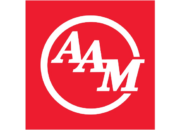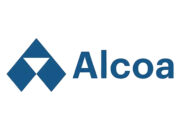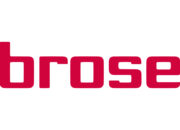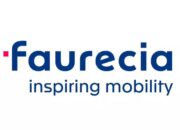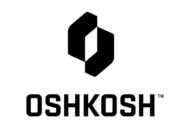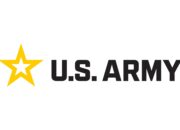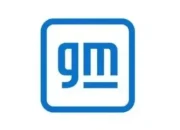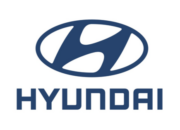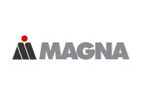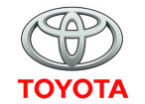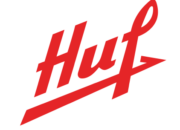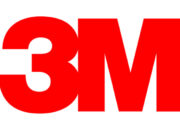Simulation
We leverage 3D modeling and simulation to create and evaluate the product design. This allows us to rapidly iterate design concepts and receive client feedback to ensure it will function properly while minimizing the chances of unforeseen risks. Our goal is to optimize product performance for smarter R&D decisions across the enterprise, reducing physical testing allowing for more time for innovation and save time and money during the product development cycle. Our CAE services include a full range of analytical services.
Industries We Serve
At ADAPT Technology, we pride ourselves on offering comprehensive engineering and simulation services across a wide range of industries. Our expertise and advanced technological capabilities allow us to cater to the specific needs of each sector, ensuring optimized product performance, innovative design solutions, and cost-effective production processes. The industries we serve include:
Aerospace
In the aerospace industry, precision and reliability are paramount. We provide advanced simulation and analysis services that help in designing components and systems that meet stringent safety and performance standards. Our solutions enable efficient material utilization, aerodynamic optimization, and structural integrity assessment, ensuring that aerospace products are both safe and effective.
Automotive
The automotive industry relies heavily on our comprehensive simulation and analysis services to enhance vehicle safety, performance, and comfort. From crashworthiness and occupant safety simulations to noise, vibration, and harshness (NVH) analysis, we help automotive manufacturers design and produce vehicles that meet rigorous regulatory standards and customer expectations.
Consumer Products
In the consumer products sector, innovation and time-to-market are critical. Our services support the rapid prototyping and testing of new designs, ensuring that products are both functional and appealing to consumers. We provide simulations for durability, material optimization, and manufacturing feasibility to help our clients deliver high-quality products efficiently.
Defense
For the defense industry, reliability and performance under extreme conditions are crucial. Our engineering and simulation services assist in the development of defense systems and components that can withstand harsh environments and meet rigorous operational requirements. We offer solutions for structural analysis, thermal management, and reliability testing to ensure the highest standards of defense readiness.
Heavy Truck & Equipment
In the heavy truck and equipment industry, robustness and durability are key factors. We offer simulation and analysis services that help in designing components capable of withstanding heavy loads and harsh operating conditions. Our services include fatigue analysis, structural integrity assessment, and optimization for weight and cost, ensuring that heavy-duty equipment is both reliable and efficient.
Medical
The medical industry demands precision and adherence to strict regulatory standards. Our advanced simulation and analysis services support the development of medical devices and equipment that are safe, effective, and compliant. We provide solutions for thermal analysis, material selection, and durability testing, helping medical manufacturers bring innovative and reliable products to market.
Tooling & Automation
In the tooling and automation industry, efficiency and precision are critical for successful operations. Our services include the design and analysis of tools, jigs, and fixtures, ensuring that they are optimized for performance and longevity. We also provide simulations for automation systems to enhance productivity and reduce operational costs.
Why Computer aided engineering and Analysis?
One of our most valuable engineering tools in product development is CAE. Being able to analyze numerous design variations or “what if” scenarios and optimize designs prior to being manufactured and eliminate problems prior to production is one of the great values of analysis.
Designs can be optimized for weight, cost, and performance, for almost any material. Optimization can be based on multiple simulations such as stress, strain, weight, force displacement, rotation, reaction force, normal modes, buckling and many other factors. We focus on optimizing designs up front and early (analytically driven design) to achieve superior design faster.
CAE Computational Fluid Dynamics (CFD)
Computational Fluid Dynamics (CFD) simulation models fluid flow situations around or through any product for the prediction of heat, mass and momentum transfer.
- accurately predict fluid behavior
- ability to accurately solve non-steady flow behavior of highly turbulent flows
- ability to predict areo-accoustic effects readily available
- provide comprehensive flow predictions for preliminary design iterations
- provide more information generally not available by experiments or testing
CAE Moldflow Analysis (Certified)
Moldflow analysis
Moldflow Analysis is a plastic injection molding simulation analysis tool that allows us to determine the manufacturing characteristics of parts early in design stages while avoiding potential issues that could have led to production delays and costly overruns. ADAPT engineers have demonstrated that CAE Moldflow Analysis:
- Helps to ensure rapid manufacturing of high-quality parts
- Increases the confidence in the manufacturability of the design
- Reduces part cost by improving material utilization
- Improves part strength, quality and value
- Optimizes the design to the client’s production capabilities
- Benefits in the selection of material characteristics
- Supports the ability for advanced analysis, such as warpage or shrinkage
Acoustics Analysis
Acoustics Analysis is in regard to the propagation of sound and how to best design for certain acoustic requirements. ADAPT engineers can analyze current designs for acoustics requirements and help with design and material recommendations to improve the acoustics through specialized analysis software.
Blank Sizing & Material Utilization
As a precursor to the stamping process, specialized software enables ADAPT to quickly study and asses blank sizing and material utilization to minimize on scrap and waste.
Contact Stress Analysis
Utilizing the latest algorithms in our analysis software, ADAPT can predict the contact stresses in an application whether it is an insertion/extraction, press-fit or frictional contact in order to create the best design and verification strategy.
Cooling Analysis
Cooling Analysis provides the ability to accurately simulate any number of cooling designs to achieve uniform part cooling, minimize cycle times and reduce part warpage due to non-uniform cooling. Cooling design analysis can be used for products such as cooling circuits, inserts and steel types, and it can evaluate or determine the recommended cooling modifications, appropriate coolant temperature, the low rate to ensure coolant turbulence and the cycle-time based on a specified ejection temperature
Coupled Thermal-Structural Analysis
Coupled Thermal-Structural Analysis is typically applied to structures that experience operating loads at high temperatures like automotive exhaust, engines and so on. ADAPT has experience with modeling a variety of coupled thermal structural analysis to study and asses the design, material and structure.
Design Sensitivity Analysis
Structural Design Sensitivity Analysis concerns the relationship between design variables available to the design engineer and structural responses. Typical structural response may include displacement, stress, strain, natural frequency, buckling load, acoustic response and frequency response among others. Based on the sensitivity of the design variables like material property, sizing, component shape and configuration, ADAPT can make quick recommendations on material selection, gauge and part design.
Design for Six Sigma (DFSS)
As part of systems engineering, DFSS is a highly-disciplined process that helps companies focus on developing and delivering near-perfect products and services. ADAPT engineers have applied principles of DFSS to analysis for automotive and other components for improving designs.
Durability & Fatigue Analysis
Parts and structures subjected to cyclic mechanical and thermal loads will suffer from fatigue. Structural components such as a control arm might be strong enough to withstand a single, applied load, but to predict a component failure in daily, heavy-use, a Durability and Fatigue Analysis can be simulated to calculate and verify the lifetime of a product. ADAPT’s analysis can help predict how fatigue will affect the overall life of the product, identify areas that may be critically damaged and provide solutions to improve part strength, quality and value.
Flow & Pack / Filling Analysis
Flow and Pack Analysis is the first stage of the molding simulation process. Flow calculates the melt front advancement that grows through the part from the injection location and continues until the switch-over point to packing. Filling analysis provides the ability to simulate, identify and optimize the process to avoid molding uncertainty or resolve an existing injection molding problem.
Frequency & Buckling Analysis
Frequency and Buckling Analyses are critical components of a design and verification process. Inherent vibration modes in structural components or mechanical support systems can shorten equipment life and cause unexpected failures. ADAPT can evaluate natural frequencies and critical buckling loads, then expertly recommend design changes to improve product performance.
Kinematics Simulations
Kinematics Simulations are performed with an assembly of parts that are connected together by a variety of movable joints. When one of the joints move, it causes the assembly to move. While loads or weights are not associated with the parts, the assembly of parts is moving through some range of motion. ADAPT engineers can quickly develop and deliver kinematic working models using advanced software.
Linear & Non-Linear Optimization
Optimization refers to identifying the best solution from some a set of available alternatives. In the simplest case, this means solving problems in which one seeks to minimize or maximize a real function by systematically choosing the values of real or integer variables from within an allowed set. This formulation, using a scalar, real-valued objective function, is the simplest example of linear optimization. Optimization theory and techniques extend to other formulations and comprise a large area of applied mathematics. More generally, it means finding the “best available” values of some objective function given a defined domain, including a variety of different types of objective functions and different types of domains. When this domain is non-linear, it is formulated as non-linear optimization. ADAPT uses a variety of linear and non-linear optimization software to optimize designs for complex requirements such as roof crush and much more.
Linear & Non-Linear Statics Analysis
Linear and Non-Linear Statics Analysis is used for design and verification of products using a variety of structural and thermal loads. Knowing how a design will perform under different statics load conditions enables ADAPT engineers to recommend changes prior to physical prototyping, thereby saving time and money. Since most engineering problems contain some form of non-linear effect, ADAPT can include geometric and material non-linearity effects. ADAPT uses simplified linear approximations as a faster and more efficient alternative to non-linear analysis.
Manufacturing Analysis
A wide variety of computer simulation-based evaluation is now available to model and virtually simulate manufacturing feasibility for extrusion, tube bending, hydro-forming, casting and forging analysis. Custom software allows ADAPT to quickly evaluate manufacturing process for client applications to help with design recommendations to improve their products from a manufacturing perspective, thereby offering cost savings through avoidance of costly and time-consuming trial and error test methods.
Material Cost Reduction Studies
Material Cost Reduction can be achieved through a variety of methods and may include complete design using alternate materials, material substitution and down-gauge studies, material utilization studies, among other methods. ADAPT engineers can help evaluate material needs from furniture and other consumer products to Defense and Aerospace needs.
Mechanism Analysis
Analysis of Mechanisms is the study of motion of different members constituting a mechanism and the mechanism as a whole entity while it is being operated or run. This study of motion involves linear as well as angular position, velocity and acceleration of different points on members of mechanisms. ADAPT utilizes state-of-the-art software to evaluate all mechanism analysis needs and to provide design recommendations.
Metal Forming Analysis
Metal Forming Analysis is a virtual simulation of the process by complete simulation of press action in a stamping operation to form sheet metal parts. The analysis provides a visual design verification in the virtual world without the need for expensive and time-consuming prototyping. All aspects of forming can be evaluated including stamping, trimming, flanging, hemming and spring-back. ADAPT engineers have vast experience in this domain and have advanced software to assist with modeling and simulations.
Model Generation & Verification
We can develop FEA models for all types of analysis using state-of-the-art meshing software including batch meshing capabilities for rapid mesh generation. ADAPT utilizes mesh quality-checking tools and checklists to ensure the mesh meets client requirements and meshing guidelines.
Multi-Body Dynamics (MBD)
MBD programs can simulate the dynamics and control of multi-bodied mechanisms and ground/airborne vehicles. ADAPT can do mechanism analysis ranging from a simple linkage to complex auto engine assemblies to airborne/space vehicles. These models are designed to assess the concept feasibility, optimize vehicle/mechanism design and control system and quickly analyze the system for kinematic or dynamic failure.
Noise, Vibration & Harshness Analysis (NVH)
NVH Analysis is the study and modification of the noise and vibration characteristics of vehicles. While noise and vibration can be readily measured, harshness is a subjective quality, and it is measured either via “jury” evaluations or with analytical tools that provide results reflecting human subjective impressions. ADAPT has performed NVH simulations for cars, trucks and occupants of the can, and our engineers can change the sound quality by adding or subtracting particular harmonics and design around certain frequencies.
Reliability & Robustness Analysis
Reliability-based robust design for products like automobiles can be offered through mathematical and mechanical models for actual computation methods and practices on the basis of the research of failure physics combined with the reliability-based test and statistical analysis of failure data. ADAPT engineers utilize the latest software to develop predictive models for Reliability and Robustness engineering.
Size & Shape or Gauge Optimization
Also known as Gauge Optimization, in the Size and Shape Optimization method the thickness of the design variable parts are optimized by a method that gives the optimum gauges for sheet metal parts. Shape optimization involves developing morphed shapes or design variables which explore all the shapes available within the design space and through computational methods to quickly evaluate the product and provide solutions for the optimal shape.
Stochastic Analysis
Stochastic or random vibrations occur in a variety of applications of mechanical engineering. ADAPT can simulate how structures respond to random excitation and help quantify the random behavior to assist in product design decisions.
Thermal Analysis
Thermal Analysis evaluates the effects of temperature on materials and design. There are three types of thermal effects, and conduction, convection and radiation can all be studied using advanced computer simulations. Having modeled many complex thermal analyses for both steady state and transient simulations, ADAPT has the software and experience to provide improve part strength, quality and value.
Structural Crashworthiness
ADAPT can quickly simulate FMVSS, ECE and Insurance Institute test scenarios using a variety of dummy models, deformable and rigid barriers, impactors, rams, pendulums and head forms. Our engineers perform vehicle simulations for a variety of global requirements including:
- FMVSS crashworthiness regulations for frontal, rear and side impact and roof crush resistance
- ECE regulations such as deformable 40% offset, frontal impact, rear impact, euro dynamic side impact, etc.
- Insurance/consumer requirements for IIHS, RCAR, AMS
- Bumper Testing for both high and low speed impact tests
- FMVSS requirements for occupant safety with free motion head impact, seatbelt anchorage, child restraints anchorage system, sled test occupant simulation, knee bolster simulation, steering control system, etc.
- ECE regulations including luggage intrusion, steering control system, pedestrian safety, etc.
- Airbag Folding Simulation
Topology & Free Size Optimization
In Topology Optimization, material is taken out of locations of low stress. This method leaves material only where necessary, which gives the load path. The optimized design has holes cut in the design variable parts, which lightens the structure. In this optimization method, typically the thickness of the parts, is not changed. Volume topology is often used to do concept design studies where non-intuitive designs can be quickly developed within the available design space.
During Free Size Optimization method, the thickness of the design variable parts is reduced at locations of low stress and material is added in areas of high stress. This method leaves material only where necessary, which gives the load path. The optimized design has holes cut in the design variable parts, which lightens the structure. In this optimization method, the thickness of the parts changes continuously.
In addition, Topology Optimization and Free Size Optimization can be combined. In doing so, the thickness of the part is increased or decreased based on the size optimization, and the topology optimization removes material where it is not necessary for managing stresses.
Warpage Analysis
Warpage Analysis provides the ability to optimize part design, material selection, mold design and processing parameters to manage and reduce part warpage in order achieve the intended part design. The results of a Warpage study can determine:
- The warped shape of the part as it is ejected from the mold
- The individual effects of filling, packing and cooling
- The X, Y and Z-axis displacements to show only the deflection in each direction
- An estimate of the shrinkage to which a mold should be cut
Take advantage
of our expertise and resources
We have extensive relationships with contract manufacturers and component suppliers worldwide. We reducing the burden on you and liaison third parties for you to ensure partners are integrated into the development process early. We act as a n integrator for your organization and your suppliers and manufacturers,
